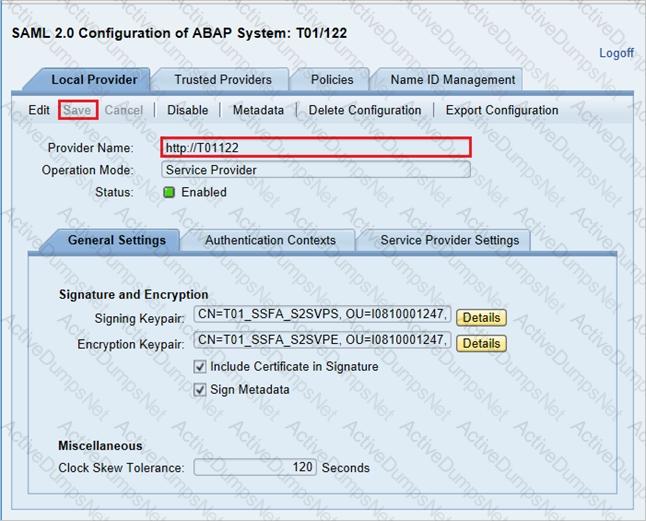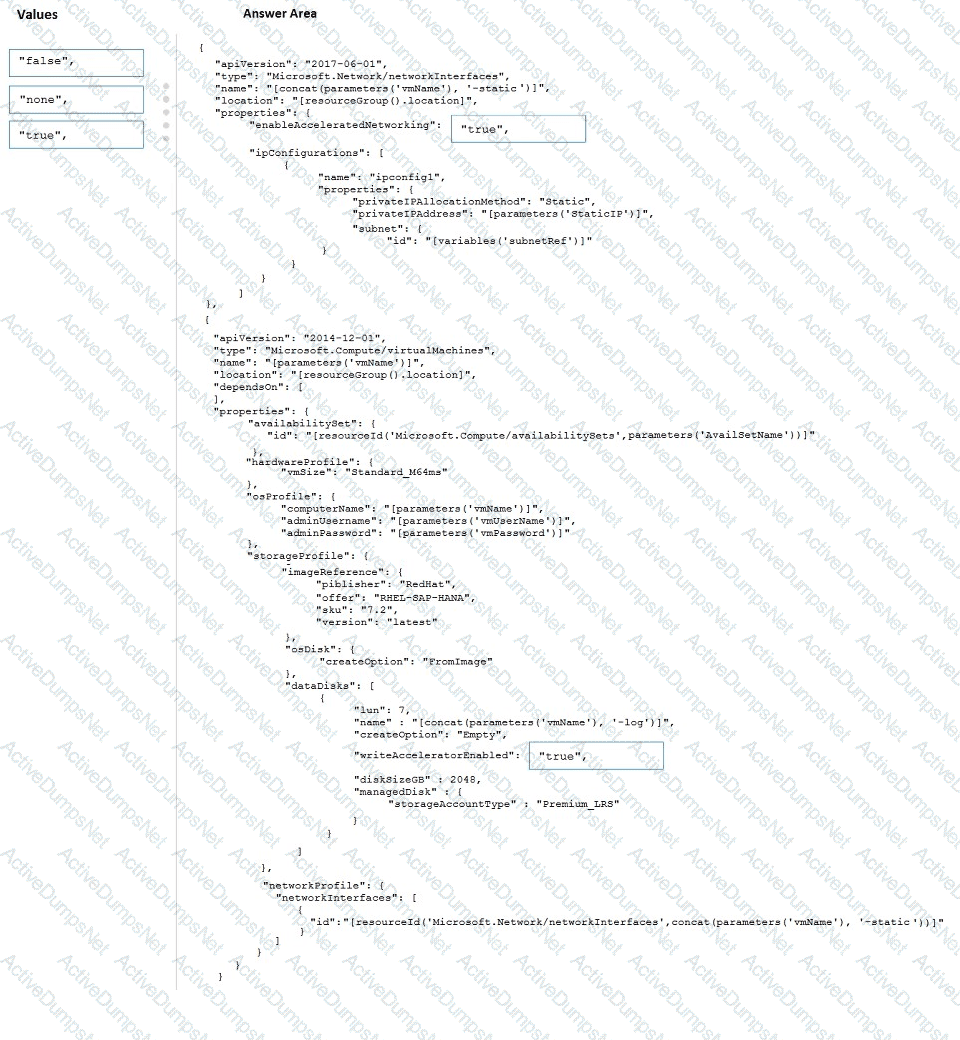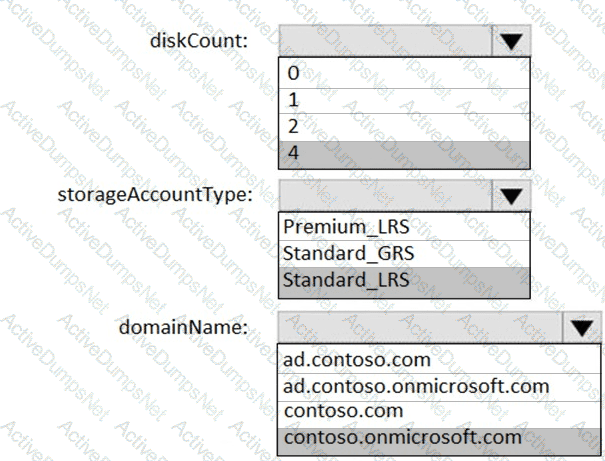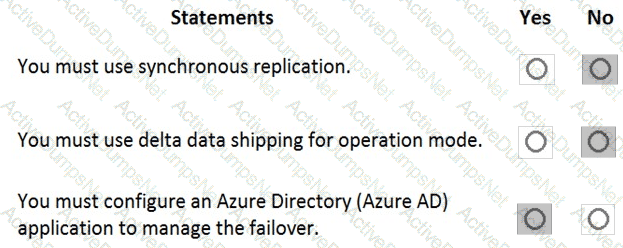Microsoft AZ-120 Planning and Administering Microsoft Azure for SAP Workloads Exam Practice Test
Planning and Administering Microsoft Azure for SAP Workloads Questions and Answers
You plan to deploy SAP HANA to an Azure virtual machine that has a constrained vCPU size.
You need to validate that the virtual machine complies with SAP-defined resource requirements by using the SAP HANA Hardware and Cloud Measurement Tools (HCMT).
In which order should you perform the actions? To answer, move all actions from the list of actions to the answer area and arrange them in the correct order.

You have two Azure virtual machines that host a Microsoft SQL Server 2019 failover cluster instance (FCI) named FCI1.
FCI1 hosts the database tier of an SAP NetWeaver system. The application tier connects to FCI1 by using a virtual network name (VNN) of fci1.contoso.com. Name resolution is provided by an Azure Private DNS zone.
On FCI1, you implement a distributed network name (DNN) of FCI1DNN and verify that you can connect to fci1dnn.contoso.com.
You need to ensure that the application tier can use the DNN when connecting to FCI1.
What should you do first?
You are deploying an SAP production landscape in Azure.
You need to create an Azure policy that meets the following requirements:
• Limits which applications can be installed on virtual machines
• Ensures that when a virtual machine is deployed, the virtual machine has the latest version of the extension to be installed
How should you complete the policy? To answer, select the appropriate options in the answer area.
NOTE: Each correct selection is worth one point.

You plan to deploy a high availability SAP environment that will use a failover clustering solution.
You have an Azure Resource Manager template that you will use for the deployment. You have the following relevant portion of the template.
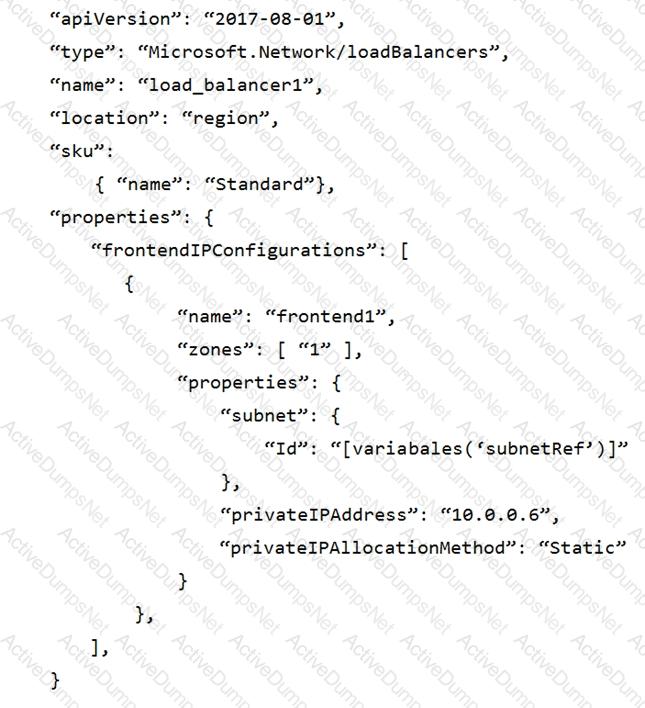
What is created by the template?
This question requires that you evaluate the underlined text to determine if it is correct.
You have an SAP environment on Azure that uses Microsoft SQL server as the RDBMS.
You plan to migrate to an SAP HANA database.
To calculate the amount of memory and disk space required for the database, you can use SAP Quick Sizer.
Instructions: Review the BOLD text, If the makes the stamen correct, select ‘’No change is needed. “ if the statement is incorrect select the answer choice that makes the statement correct.
You plan to implement a deployment of SAP NetWeaver on Azure. The deployment will be hosted on virtual machines that run a custom Windows Server 2022 Datacenter image.
You need to configure the virtual machines to support Secure Boot.
What should you do? To answer, select the appropriate options in the answer area.
NOTE: Each correct selection is worth one point.

You are deploying SAP Fiori lo an SAP environment on Azure.
You are configuring SAML 2.0 for an SAP Fiori instance named FPP that uses client 100 to authenticate to an Azure Active Directory (Azure AD) tenant.
Which provider name should you use to ensure that the Azure AD tenant recognizes the SAP fiori instance?
You have highly available deployment of SAP NetWeaver on Azure that uses a third-party solution for clustering ABAP SAP Central Services (ASCS) components.
You need to recommend a solution to reduce the cost of shared storage for the components.
What should you include in the recommendation?
For each of the following statements, select Yes if the statement is true. Otherwise, select No.
NOTE: Each correct selection is worth one point.

You have an SAP on Azure landscape. You need to gather the following metrics:
• The network latency between an SAP NetWeaver server and an SAP HANA server.
• The throughput and latency of the storage subsystem on Windows Server and Linux platforms
What should you use for each metric? To answer, select the appropriate options in the answer area. NOTE: Each correct selection is worth one point.

You have an on-premises SAP NetWeaver-based ABAP deployment hosted on servers that run Windows Server or Linux.
You plan to migrate the deployment to Azure.
What will invalidate the existing NetWeaver ABAP licenses for each operating system once the servers are migrated to Azure? To answer, drag the appropriate actions to the correct operating systems. Each action may be used once, more than once, or not at all. You may need to drag the split bar between panes or scroll to view content
NOTE: Each correct selection is worth one point.

You are planning the implementation of a Pacemaker cluster that will run Red Hat Enterprise Linux (RHEL) and host three SAP HANA nodes.
You need to recommend a solution to ensure that a node is shut down if there is an issue on the node. The solution must minimize complexity and costs.
What should you include in the recommendation?
Note: This question is part of a series of questions that present the same scenario. Each question in the series contains a unique solution that might meet the stated goals. Some question sets might have more than one correct solution, while others might not have a correct solution.
After you answer a question in this section, you will NOT be able to return to it. As a result, these questions will not appear in the review screen.
You have a complex SAP environment that has both ABAP- and Java-based systems. The current on-premises landscapes are based on SAP NetWeaver 7.0 (Unicode and Non-Unicode) running on Windows Server and Microsoft SQL Server.
You need to migrate the SAP environment to a HANA-certified Azure environment.
Solution: You migrate SAP to Azure by using Azure Site Recovery, and then you upgrade to SAP NetWeaver 7.4.
Does this meet the goal?
You plan to deploy multiple SAP HANA virtual machines to Azure by using an Azure Resource Manager template.
How should you configure Accelerated Networking and Write Accelerator in the template? To answer, drag the appropriate values to the correct targets. Each value may be used once, more than once, or not at all. You may need to drag the split bar between panes or scroll to view content.
NOTE: Each correct selection is worth one point.
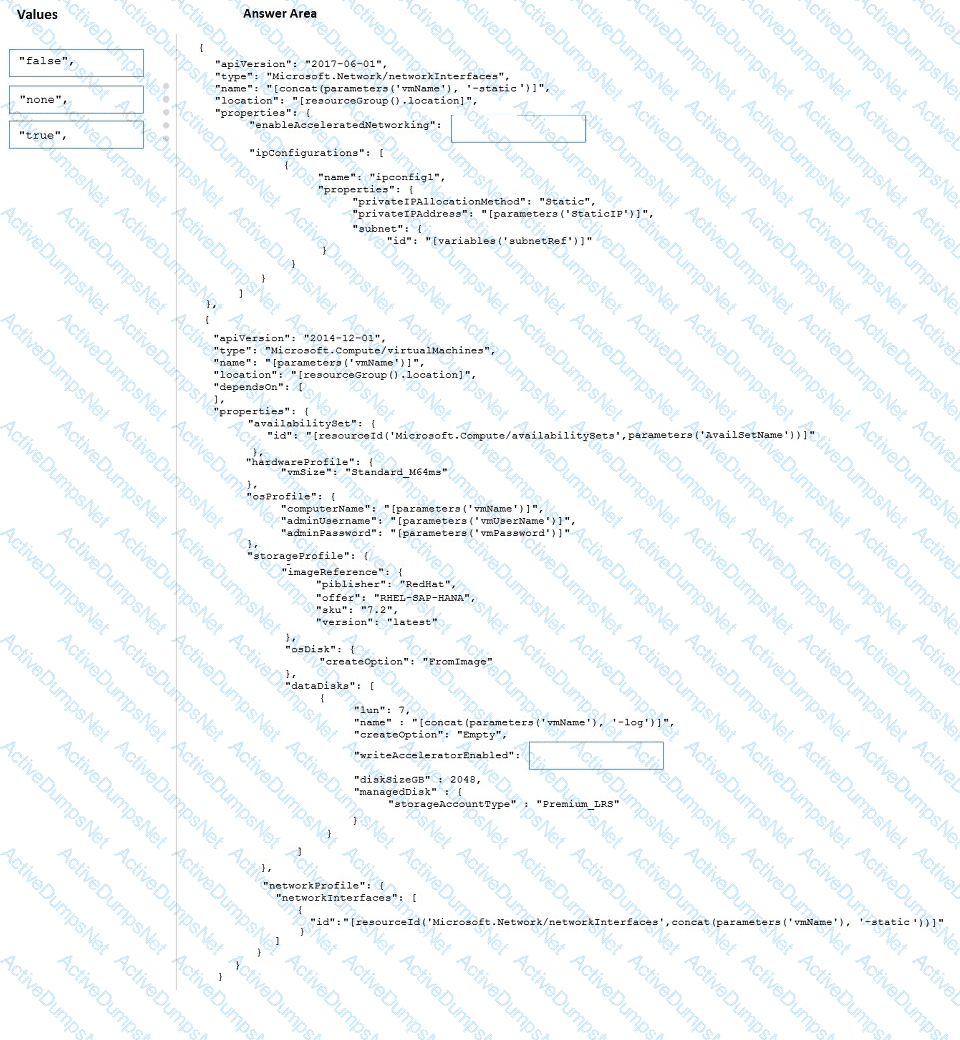
You have an on-premises SAP HANA deployment.
You plan to migrate the deployment to Azure virtual machines. The migrated deployment will use Azure Premium Storage VI SSD for the volume that will host /hana/data and Azure ultra disks for the volume that will host /hana/logs.
You need to recommend the cache configuration for each volume.
What should you recommend for each volume? To answer, select the appropriate options in the answer area.
NOTE Each correct selection is worth one point.
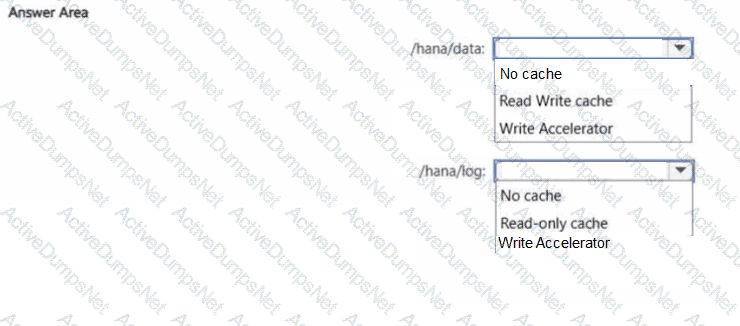
For each of the following statements, select Yes if the statement is true. Otherwise, select No. NOTE: Each correct selection is worth one point.

For each of the following statements, select Yes if the stamen is true. Otherwise, select No.
NOTE: Each correct selection is worth one point.

Note: This question is part of a series of questions that present the same scenario. Each question in the series contains a unique solution that might meet the stated goals. Some question sets might have more than one correct solution, while others might not have a correct solution.
After you answer a question in this section, you will NOT be able to return to it. As a result, these questions will not appear in the review screen.
You deploy SAP HANA on Azure (Large Instances).
You need to back up the SAP HANA database to Azure.
Solution: You use a third-party tool that uses backint to back up the SAP HANA database to Azure storage.
Does this meet the goal?
You deploy an SAP environment on Azure.
You need to grant an SAP administrator read-only access to the Azure subscription. The SAP administrator must be prevented from viewing network information.
How should you configure the role-based access control (RBAC) role definition? To answer, drag the appropriate values to the correct targets. Each value may be used once, more than once, or not at all. You may need to drag the split bar between panes or scroll to view content.
NOTE: Each correct selection is worth one point.

You have an Azure subscription.
You plan to deploy a highly available SAP NetWeaver system to an Azure region that contains three availability zones. The system will be hosted in an Azure virtual machine scale set.
You need to recommend which type of deployment and which platformFaultDomainCount value to use. The solution must maximize the availability of the system.
What should you recommend? To answer, select the appropriate options in the answer area.
NOTE: Each correct selection is worth one point.

You are designing a four-node SAP Web Dispatcher deployment for an SAP on Azure landscape.
You need to recommend a resiliency solution and a load-balancing solution for the deployment. The solution must meet the following requirements;
• Receive the highest SLA from Microsoft.
• Load balance client connections.
• Minimize administrative effort
What should include in the recommendation for each solution? To answer, select the appropriate options in the answer area. NOTE Each correct selection is worth one point.

Your on-premises network contains the following:
• A 1-Gbps internet connection
• An SAP HANA 1.0 instance that has a 4-TB database
• An SAP landscape that uses SUSE Linux Enterprise (SLES) 12
You have an Azure subscription that contains a virtual machine. The virtual machine is of the M64s SKU and runs SLES 15 and HANA 2.0.
You need to migrate the database to the virtual machine and upgrade the database to HANA 2.0. The solution must meet the following requirements:
• The migration must be performed during a weekend.
• The database can be offline during the migration.
Which migration method should you use?
You have an SAP environment on Azure that uses multiple subscriptions.
To meet GDPR requirements, you need to ensure that virtual machines are deployed only to the West Europe
and North Europe Azure regions.
Which Azure components should you use?
You have an SAP on Azure production landscape that contains an SAP HANA database. You create a backup policy as shown in the following exhibit.
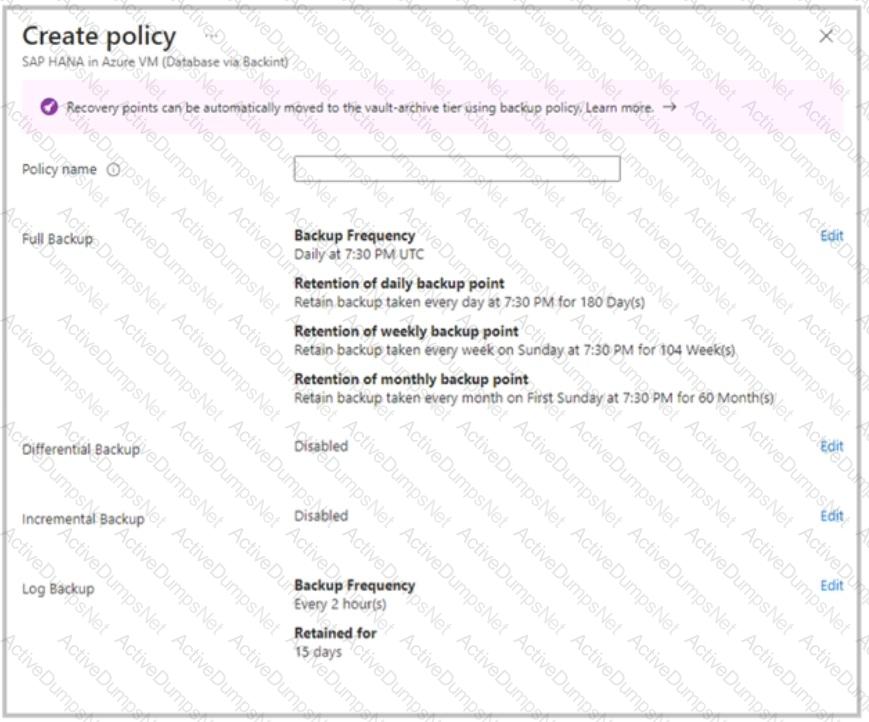
Use the drop-down menus to select the answer choice that completes each statement based on the information presented in the graphic. NOTE: Each correct selection is worth one point.

For each of the following statements, select Yes if the statement is true. Otherwise, select No.
NOTE: Each correct selection is worth one point.

You plan to deploy SAP HANA to an Azure virtual machine for a production landscape.
You need to stripe multiple disks together by using the HANA indexserver.
How should you configure the Azure disks? To answer, select the appropriate options in the answer area.
NOTE: Each correct selection is worth one point.
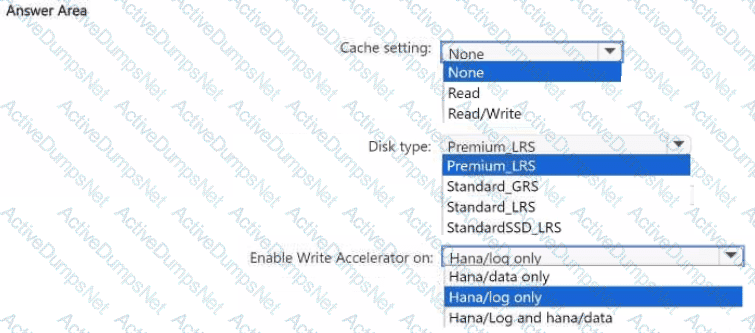
You plan to deploy a highly available SAP NetWeaver system to Azure virtual machines on SUSE Linux Enterprise Server (SLES) for SAP Applications.
You need to configure a load balancer that will be deployed in front of the ABAP Central Services (ASCS) tier. The solution must minimize the number of required load balancing rules.
What should you configure? To answer, select the appropriate options in the answer area.
NOTE: Each correct selection is worth one point.

You have an Azure subscription named Sub! that contains a Microsoft Sentinel workspace named Workspace1.
You have an SAP RISE managed workload that is integrated with Sub1.
You need to implement the Microsoft Sentinel solution for SAP applications in Workspace1. The solution must meet the following requirements:
• Generate an incident based on transaction codes when a sensitive SAP transaction is executed by an unauthorized user.
• When an incident is generated, send a notification to a designated Microsoft Teams channel.
• Minimize administrative effort.
What should you include in the solution? To answer, select the appropriate options in the answer area. NOTE: Each correct selection is worth one point.

You need to deploy an SAP production landscape on Azure. The solution must be supported by the SAP production landscape and must minimize costs.
Which Azure virtual machine series should you use for each SAP workload? To answer, drag the appropriate series to the correct workloads. Each series may be used once, more than once, or not at all. You may need to drag the split bar between panes or scroll to view content.
NOTE: Each correct selection is worth one point.

You have a Microsoft Entra tenant named contoso.com.
You have an SAP landscape in Azure.
You need to use an SAP HANA application to enable single sign-on (SSO) to contoso.com.
Which authentication protocol should you configure for the application, and what should you upload to the HANA XSA Web Console to enable SSO? To answer, select the appropriate options in the answer area.
NOTE: Each correct selection is worth one point.
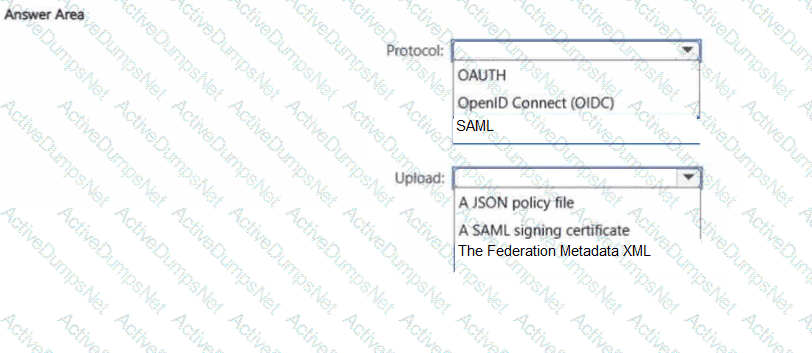
For each of the following statements, select Yes if the statement is true. Otherwise, select No.
NOTE: Each correct selection is worth one point.
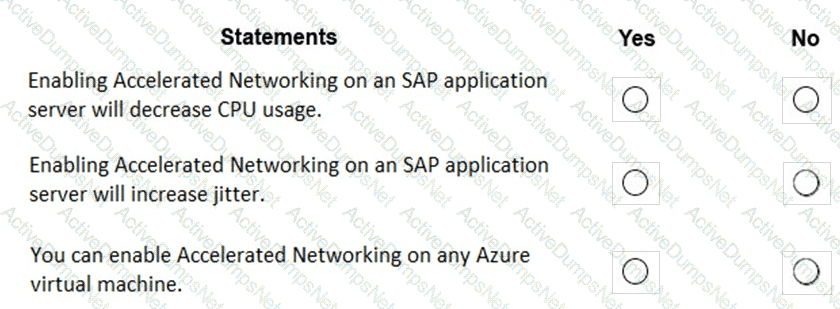
Litware is evaluating whether to add high availability after the migration?
What should you recommend to meet the technical requirements?
You need to ensure that you can receive technical support to meet the technical requirements.
What should you deploy to Azure?
For each of the following statements, select Yes if the statement is true. Otherwise, select No.
NOTE: Each correct selection is worth one point.

For each of the following statements, select Yes if the statement is true. Otherwise, select No.
NOTE: Each correct selection is worth one point.

You need to recommend a solution to reduce the cost of the SAP non-production landscapes after the migration.
What should you include in the recommendation?
What should you use to perform load testing as part of the migration plan?
You are evaluating the migration plan.
Licensing for which SAP product can be affected by changing the size of the virtual machines?
You are evaluating which migration method Litware can implement based on the current environment and the business goals.
Which migration method will cause the least amount of downtime?
You are planning the Azure network infrastructure to support the disaster recovery requirements.
What is the minimum number of virtual networks required for the SAP deployed?
You need to provide the Azure administrator with the values to complete the Azure Resource Manager template.
Which values should you provide for diskCount, StorageAccountType, and domainName? To answer, select the appropriate options in the answer area.
NOTE: Each correct selection is worth one point.
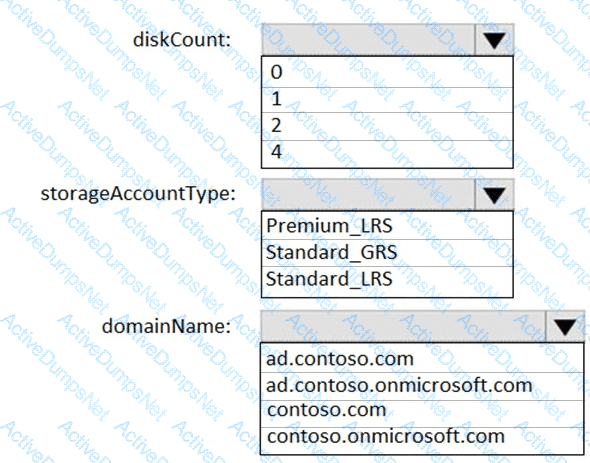
Once the migrate completes, to which size should you set the ExpressRoute circuit to the New York office to meet the business goals and technical requirements?
This question requires that you evaluate the underlined BOLD text to determine if it is correct.
You are planning for the administration of resources in Azure.
To meet the technical requirements, you must first implement Active Directory Federation Services (AD FS).
Instructions: Review the underlined text. If it makes the statement correct, select “No change is needed”. If the statement is incorrect, select the answer choice that makes the statement correct.
You are planning replication of the SAP HANA database for the disaster recovery environment in Azure.
For each of the following statements, select Yes if the statement is true. Otherwise, select No.
NOTE: Each correct selection is worth one point.

Which Azure service should you deploy for the approval process to meet the technical requirements?
You are evaluating the proposed backup policy.
For each of the following statements, select Yes if the statement is true. otherwise, select No.
NOTE: Each correct selection is worth one point.
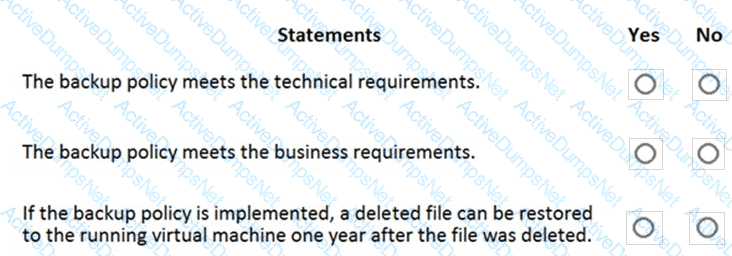
Before putting the SAP environment on Azure into production, which command should you run to ensure that the virtual machine disks meet the business requirements? To answer, select the appropriate options in the answer area.
NOTE: Each correct selection is worth one point.





